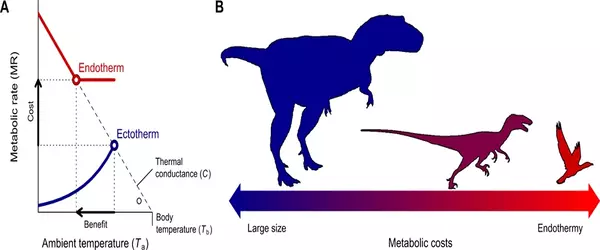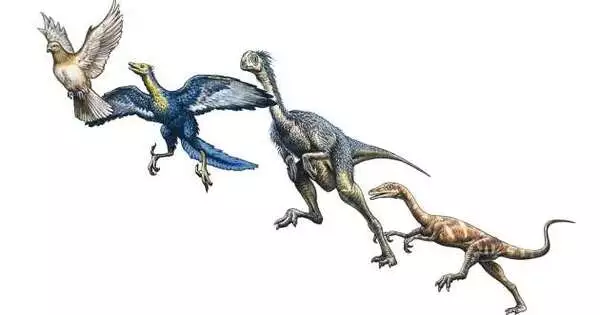Dinosaurs were a diverse group of reptiles that lived from about 245 million years ago until their extinction 66 million years ago. During their reign, dinosaurs evolved a remarkable range of body sizes, from the tiny two-foot-long Compsognathus to the colossal 120-foot-long Argentinosaurus. The evolution of dinosaur body size was driven by various developmental mechanisms, including genetic, epigenetic, and environmental factors.
Theropods, or meat-eating dinosaurs, roamed the ancient Earth and ranged in size from the bus-sized T. rex to the smaller, dog-sized Velociraptor. Scientists investigating how such wildly disparate dinosaur sizes evolved recently discovered, to their surprise, that smaller and larger theropod dinosaurs like these did not necessarily get that way simply by growing slower or faster.
In a new paper published in Science titled “Developmental strategies underlying gigantism and miniaturization in non-avialan theropod dinosaurs,” researchers including Ohio University professor Patrick O’Connor and Ph.D. student Riley Sombathy discovered that there was no relationship between growth rate and body size by examining dinosaur bones.
“Most animals are thought to evolve to be larger by growing faster than their ancestors, but this study shows that bigger and smaller animals grew for longer or shorter periods of time during growth spurts,” said Michael D. D’Emic, a paleontologist at Adelphi University and lead author of the study.
We discovered no relationship between growth rate and size. Some enormous dinosaurs grew as slowly as alligators do today. And some smaller dinosaurs grew as quickly as mammals do today.
Michael D. D’Emic
Many animals’ bones, including dinosaurs, slowed or halted growth every year, leaving marks similar to tree rings that indicate the animal’s age and can be used to estimate the rate of growth. “These are known as cortical growth marks,” D’Emic explained. “Widely spaced rings indicate faster growth, while narrowly spaced rings indicate a slower growth rate.”
D’Emic, O’Connor, Sombathy, and a team of international researchers measured about 500 such growth rings in about 80 different theropod bones, which are two-legged, mostly meat-eating dinosaurs related to birds.
“We discovered no relationship between growth rate and size,” D’Emic explained. “Some enormous dinosaurs grew as slowly as alligators do today. And some smaller dinosaurs grew as quickly as mammals do today.” This made sense to co-author Thomas Pascucci, whose graduate thesis contributed to the project: “Extinct animals like dinosaurs inspire awe because of how different they appear from our modern world, but they were animals that grew under similar constraints and environmental factors as those that exist today.”

According to O’Connor, this study paves the way for future research into how animals regulate their growth. “Theropod dinosaurs’ developmental strategies are most likely explained by changes in growth control mechanisms at the molecular or genetic level. Future research on living organisms will allow us to better understand the mechanisms underlying the evolution of body size in vertebrates in general.”
Sombathy hopes to conduct some of those investigations, he says “One of the most intriguing aspects of the findings is the apparent decoupling of growth rate and body size. My Ph.D. dissertation will look into how growth rate and body size affect bone shape and function.”
“This has really important implications because changes in rate versus timing can correlate to many other things, like how many or how large your offspring are, how long you live, or how susceptible to predators you are,” D’Emic added. “Hopefully this research spurs investigations into other groups, both alive and extinct, to see what developmental mechanisms are most important in other types of animals.”
Overall, the evolution of dinosaur body size was likely influenced by a complex interplay of genetic, epigenetic, and environmental factors. By adapting to changing conditions over millions of years, dinosaurs were able to evolve a remarkable range of body sizes that helped them dominate the Earth for tens of millions of years.





